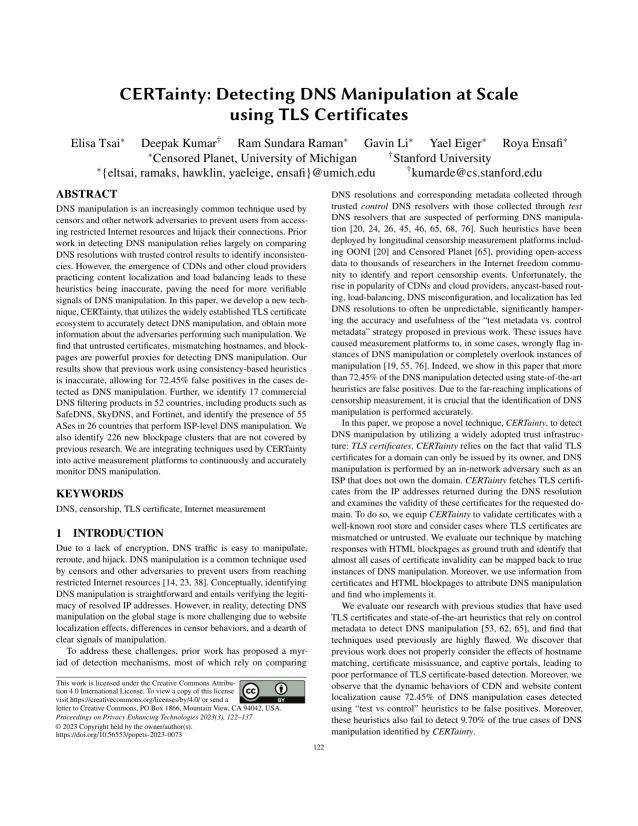CERTainty: Detecting DNS Manipulation at Scale using TLS Certificates
Authors: Elisa Tsai (University of Michigan), Deepak Kumar (Stanford University), Ram Sundara Raman (University of Michigan), Gavin Li (University of Michigan), Yael Eiger (University of Michigan), Roya Ensafi (University of Michigan)
Volume: 2023
Issue: 3
Pages: 122–137
DOI: https://doi.org/10.56553/popets-2023-0073
Abstract: DNS manipulation is an increasingly common technique used by censors and other network adversaries to prevent users from accessing restricted Internet resources and hijack their connections. Prior work in detecting DNS manipulation relies largely on comparing DNS resolutions with trusted control results to identify inconsistencies. However, the emergence of CDNs and other cloud providers practicing content localization and load balancing leads to these heuristics being inaccurate, paving the need for more verifiable signals of DNS manipulation. In this paper, we develop a new technique, CERTainty, that utilizes the widely established TLS certificate ecosystem to accurately detect DNS manipulation, and obtain more information about the adversaries performing such manipulation. We find that untrusted certificates, mismatching hostnames, and blockpages are powerful proxies for detecting DNS manipulation. Our results show that previous work using consistency-based heuristics is inaccurate, allowing for 72.45% false positives in the cases detected as DNS manipulation. Further, we identify 17 commercial DNS filtering products in 52 countries, including products such as SafeDNS, SkyDNS, and Fortinet, and identify the presence of 55 ASes in 26 countries that perform ISP-level DNS manipulation. We also identify 226 new blockpage clusters that are not covered by previous research. We are integrating techniques used by CERTainty into active measurement platforms to continuously and accurately monitor DNS manipulation.
Keywords: DNS, censorship, TLS certificate, Internet measurement
Copyright in PoPETs articles are held by their authors. This article is published under a Creative Commons Attribution 4.0 license.

